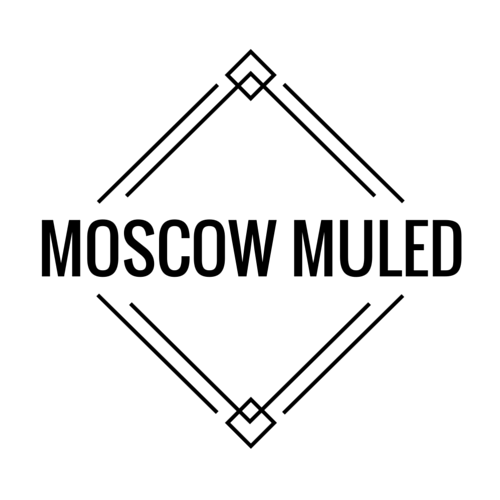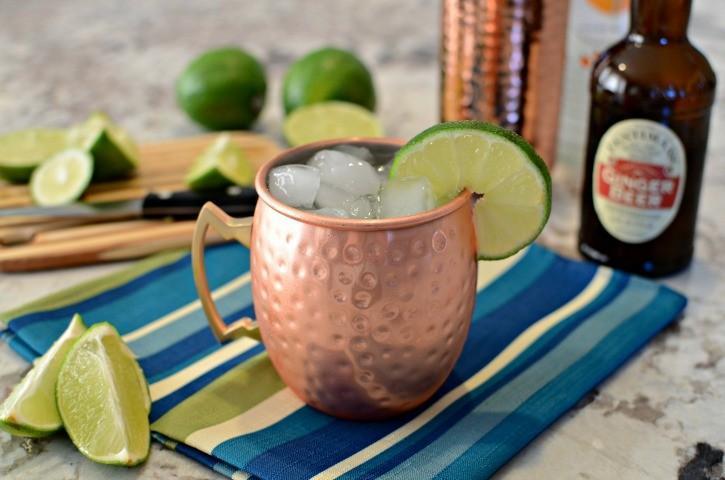In this post, we reveal the best London Mule recipe on the internet! In addition, we reveal the best gin to use for the London Mule as well as the origin of the cocktail. Let's get started!
Introduction
Gin. Very sneakily, and without many people noticing, gin became one of the most important drinks in the entire globe. You see it everywhere these days. The deliciously herbal-tasting spirit plays a key role in many of the most popular cocktails all over the world, including the near-omnipresent gin and tonic. And though its stratospheric climb up the echelons of alcoholic beverages feels like a somewhat recent phenomenon, the truth is that its expanding popularity has been slow and gradual, dating all the way back to 16th century Holland.
That’s right -- Holland! Though gin is traditionally thought of as a British drink (and it has, over the years, become closely associated with London in particular), the spirit is widely believed to have originated in Holland. Apparently created by a Dutch physician named Franciscus Sylvius, the drink was first used for medicinal purposes in the 1550s to treat gout, gallstones, and various stomach issues. It wasn’t until the English found themselves in Holland fighting against the Spanish in the Thirty Years War that they first came into contact with Dutch gin, drinking it to warm up and calm their nerves before battle (the origin of the term “Dutch courage”). The English took to the drink with much enthusiasm, brought it home with them, and perfected it over time.
Over the next few centuries, gin has become closely associated with England; King Charles I formed the Worshipful Company of Distillers, which not only perfected the quality of the product but also helped with the development of English agriculture by using surplus corn and barley. Soon after, gin became all the rage, an incredibly popular drink whose production actually exceeded that of beer and ale. By the early 1700s, London alone had over 7000s shops dedicated to selling spirits, and gin was by far the most popular. Alcohol abuse became such a problem that the Gin Act was introduced in 1736. This made gin prohibitively expensive, but it resulted in riots and was then largely ignored. The law was recognized as unenforceable and repealed in 1742 -- instead, new regulations and practices were put into place, which made the product even higher quality while keeping the price within reason.

Another drink that has had a long and storied history is the Moscow Mule. Whether you’ve tasted it or you’ve only seen it from a distance -- hard to miss its trademark copper mug -- you’re likely aware of the noble Mule family of cocktails. The original version of the Mule reportedly came to be when a bar owner found himself with a surplus of ginger beer and vodka; he decided to put them together, along with some lime juice, resulting in the now-iconic, deliciously refreshing cocktail. This drink single-handedly brought vodka into fashion in the United States, as its popularity swept through the nation.

Knowing what we know about how food and drink evolve, it’s no surprise that we were soon met with a panoply of variations on the cocktail: to wit, the Mexican Mule was just like the Moscow Mule but with tequila in place of vodka, the Kentucky Mule swapped the clear spirit for Kentucky bourbon, the Caribbean Mule used rum, etc. There are also additional variations of the drink that made other ingredients a key part of their recipe, such as the Watermelon Mule, which put watermelon juice front-and-center, or the Blackberry Moscow Mule, which uses muddled blackberries to add a tangy, extra-fruity flavor. The fact that the original Moscow Mule was such a straightforward recipe served as a kind of canvas, opening the doors for a lot of creative mixologists to make their own versions of it and turning what used to be a single cocktail into an entire family of drinks.
And since we’ve established the ubiquity and popularity of good old gin, is it any surprise that there’s a version of the Moscow Mule that trades vodka in for the Dutch-by-birth, English-by-heart spirit? That’s right; some mad genius at some point decided to trade vodka in for gin when assembling a Moscow Mule, and they stumbled onto an incredibly unique flavor combination that brings out the best in all of its ingredients. And how could they possibly name this wonderful new concoction anything other than London Mule, after the city that’s grown to be most closely associated with gin?
Though vodka and gin taste very different, both clear spirits have a lot in common. They both start off as a neutral spirit, most commonly distilled from grains; however, while vodka’s big draw is how clean and smooth it tastes, gin is all about the flavor of the botanicals which is added in later through a process called re-distillation. There are many methods of re-distillation, such as steeping the base spirit in these botanicals (juniper berries being the main source of gin’s flavor, but different variations also include botanicals such as also orris root, Angelica root, licorice root, coriander seeds, and more). This may also be achieved by packing the botanicals into baskets in the still, above the base spirit; when boiled, the spirit evaporates and rises up, infusing with the botanicals. The end result is the rich, layered flavor of gin we’ve all become familiar with.

Which would you prefer? That’s, of course, up to the individual; some may go for the Moscow Mule’s easy-breezy straightforwardness, while others may want something a little more adventurous. The difference in flavor profiles between vodka and gin causes the London Mule to be an entirely different drinking experience to the Moscow Mule. The sweet, spicy ginger beer clashes with the earthy notes of the gin in very interesting ways, resulting in a much more complex combination while also remaining light and refreshing first and foremost. And, of course, the lime juice serves as the proverbial spark that lights up this drink and elevates it to a whole other level with its agreeable crispness.
And while it’s altogether a very different drink, it’s still very familiar; between the ingredient mainstays of the ginger beer and the lime juice, as well as the trademark copper mugs they’re served in, the London Mule still feels very much like a new entry in the Mule family of cocktails.
The Best London Mule Recipe
So what is the best recipe for a London mule? It’s actually extremely simple. Let’s go through the process together:
Ingredients:
-
Fresh juice from half a lime
2 oz. gin (make it a London gin if you want to keep it extra authentic) - 3 oz. ginger beer
- Lime wedge (for garnishing)
Instructions:
- Add the lime juice, gin, and ginger beer into your copper mug, then stir the ingredients together.
- Stick the lime wedge on the glass as an optional garnish.
And there you have it! Can you believe that’s the whole recipe? We can all but guarantee that this will be the most straightforward recipe you’ll read today. But one of the great things about this cocktail is precisely how clean and uncluttered it is. Simplicity is pretty much the order of the day when it comes to these Mule drinks; adding too much more in terms of ingredients is “like putting a hat on a hat,” as my grandfather used to say.
Variations of the London Mule
Even though putting together a London Mule is extremely uncomplicated, there are variations of this recipe. For instance, there are several recipes out there that call for adding simple syrup to the mix, about a quarter of an ounce.
This will, of course, come down to individual preference, but the addition of the simple syrup might just make this cocktail a bit too sweet. If you have a sweet tooth and want to bring that out in your London mule to offset some of the gin’s earthiness, by all means, go right ahead. Who are we to stop you?
Best Gin for London Mule
If you’re wondering which gin you should be using for this London Mule, there are quite a few options to choose from.
One of the most famous brands is, of course, Beefeater Dry Gin, which is not only extremely easy to come across but is also one of the most “classic” examples of the London dry gin flavor and feel.
Another very good example of this is the slightly pricier Bulldog London Dry Gin, a refreshing gin that focuses less on the juniper berries and more on the citrus taste. It’s a very versatile gin; it’s smooth enough that you could drink it on your own, but has enough character to shake up any cocktail you use it for.
Another classic brand you can try is Sipsmith London Dry Gin, renowned for its elegant take on the classic London dry gin style.
Conclusion
Whatever you decide to go with, we hope you enjoy this delicious variation of the Moscow Mule. The field is somewhat crowded when it comes to different versions of the Mule and the different flavors they all bring to the proceedings, but the London Mule is especially interesting in how its flavors collide and coalesce into something new, rich, complex, and utterly satisfying.
Did You Enjoy This Article?
Thank you for reading! If you enjoyed this article, you might also like the following articles: 8 Best American Mule Recipes and Best Pumpkin Spice Moscow Mule Recipe


Leave a comment